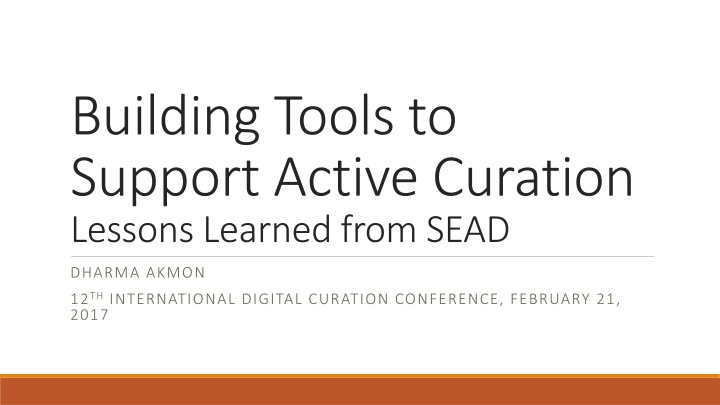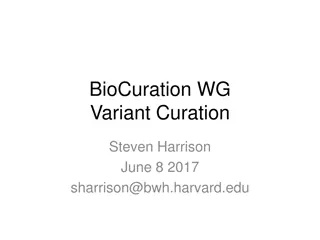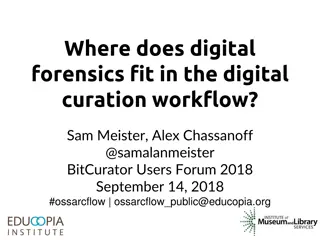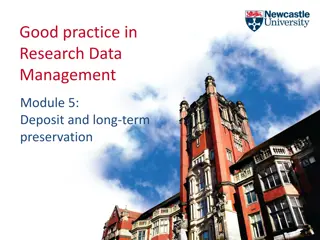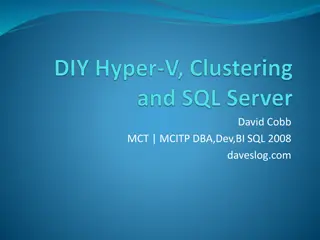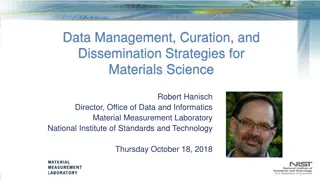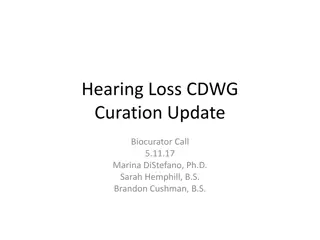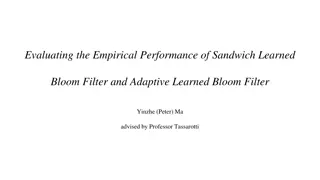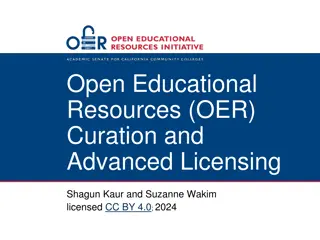Building Tools to Support Active Curation: Lessons Learned from SEAD DHARMA AKMON
The interconnected tools and services provided by SEAD to enhance active curation practices for managing research data effectively. Discover how SEAD has collaborated with numerous projects and researchers to facilitate seamless data recording, metadata management, and workflow integration throughout the research lifecycle. Learn about the diverse capabilities such as project spaces, staging areas, and submission packaging offered by SEAD to address data needs efficiently.
Download Presentation

Please find below an Image/Link to download the presentation.
The content on the website is provided AS IS for your information and personal use only. It may not be sold, licensed, or shared on other websites without obtaining consent from the author.If you encounter any issues during the download, it is possible that the publisher has removed the file from their server.
You are allowed to download the files provided on this website for personal or commercial use, subject to the condition that they are used lawfully. All files are the property of their respective owners.
The content on the website is provided AS IS for your information and personal use only. It may not be sold, licensed, or shared on other websites without obtaining consent from the author.
E N D
Presentation Transcript
Building Tools to Support Active Curation Lessons Learned from SEAD DHARMA AKMON 12THINTERNATIONAL DIGITAL CURATION CONFERENCE, FEBRUARY 21, 2017
Active curation: recording data and metadata as close to the source as practical by deploying capabilities that help data producers manage their research.
SEAD: Interconnected Tools that Serve Data Needs throughout the Research Lifecycle 1. Project Spaces to collaborate 2. Staging Area to prepare data for publication 3. Matchmaker to select the right repository 4. Submission packaging & notification
SEAD has worked with 30+ projects, dozens of researchers, and hundreds of thousands of files https://sead2.ncsa.illinois.edu/
Data and Metadata 1. Be prepared to accept a very wide range of file formats 2. Facilitate meaningful hierarchical groupings 3. Provide efficient navigation across groupings 4. Satisfy local annotation needs while nudging researchers to best practices
Workflow Integration 1. Researchers came to SEAD with a range of ideas about how and where SEAD fit into their workflow 2. Very few viewed SEAD as an active data management tool 3. Tighter coupling of research data management and publication and preservation workflows requires adjustments by both data producers and data repositories.
Building Tools and Services 1. Adoption cannot be spurred by innovative features alone 2. Scientists are heavily invested in their current data management systems, despite admitted shortcomings 3. Prioritization of potential features highlights tensions between broad usefulness vs. niche applicability
Explore SEAD! http://sead-data.net/
